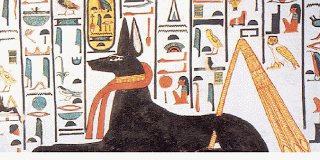For Immediate Release: Egypt Ball is a masterful combination of arcade and puzzle. Egypt Ball is an amazing adventure where the myths of Ancient Egypt will lead you through perilous dangers to achieve the great goal of restoring the long lost gifts of Amon-Ra, the King of Gods. Colorful, creatively laid out levels follow each other, and it is almost impossible to stop enjoying this game full of wonders and waiting for you toexplore them. Our updated and improved edition of Egypt Ball runs on Windows
Twain-Based Musical 'Grains of Sand'
Broadway World
A new musical, A Million Grains of Sand, opens on 24th July 2007 at The Castle Theatre, Wellingborough, written by Northamptonshire writer, Gareth Peter Dicks. "Performed by Broadway School of Performing Arts, this powerful musical promises to be a thrilling and memorable new story of self discovery. Memorable music teamed with an exciting story and intriguing characters make this one of the hottest shows of the summer," state press notes.
"As the ancient sun rises on the new day, two children are born. One, the Princess of Egypt, the other born into poverty and violence. They grow up unaware of the other, until, in a chance meeting, their two worlds collide in a tale of drama, murder, mistaken identity and love. A meeting that could change the destiny of a nation!" "Based on Mark Twain's The Prince & The Pauper, this exciting new musical shapes its story on the sands of Ancient Egypt
Pyramid Bloxx Preview
IGN Wireless
Digital Chocolate's Tower Bloxx was one of the very best mobile titles of 2005 -- a smart, clever, and graceful puzzler that personified the one-button accessibility of the best casual games. Over eighteen months later, the Choc is finalizing the next game in the nascent Bloxx series Pyramid Bloxx. Set in ancient Egypt, Pyramid Bloxx takes the general concept of Tower Bloxx -- stacking and city-planning strategy -- and expands on it without making it so top-heavy with changes that the whole thing crumbles in the hands of fans.
Scorpion King 2?
Shock Til You Drop
Shock has been tipped off that Resident Evil: Extinction director Russell Mulcahy is moving from the arid locale of one sequel to another: Universal's The Scorpion King 2.The first film, a prequel to the studio's "Mummy" franchise, opened in 2002 to a $36 million three-day gross - it made a grand total of $91 million domestically by the time it ran its course.
Cult Camp Classics Volume 4: Historical Epics
DVD Talk
The first two films in the set, The Prodigal and Land of the Pharaohs were produced in the wake of The Robe and in the first couple of years of CinemaScope. Although released by MGM, The Colossus of Rhodes represents Italy at the height of its own epic renaissance . . . .
Few epics can compare with Land of the Pharaohs for pure spectacle and a sense of wonder about the ancient world. Hawks is clearly fascinated by the building of the pyramids, and also by the nature of the 'absolute power' wielded by a man like Cheops (Jack Hawkins). Pharaoh is a living god with an entire kingdom at his disposal. He can also direct the energies of an entire people to his personal wishes, which in the Egyptian society revolve around Death and the Afterlife. The whole nation will spend fifteen years or so building a theft-proof crypt to safeguard Cheops' corpse -- and his riches -- on their way to the next life. These are grand and universal themes -- power, greed and the desire to attain immortality.
Who could resist???
 Just a quick reminder that I'm off to Poland tomorrow and won't be back until mid next week. I will update the blog next Saturday, if I don't get the chance beforehand (I may me working away from home on Thursday and Friday). In the meantime, the joys of Stanstead Airport await me.
Just a quick reminder that I'm off to Poland tomorrow and won't be back until mid next week. I will update the blog next Saturday, if I don't get the chance beforehand (I may me working away from home on Thursday and Friday). In the meantime, the joys of Stanstead Airport await me. 


